A Study of the Radiation Tolerance and Timing Properties of 3D Diamond Detectors
Abstract
:1. Introduction
2. Materials and Methods
3. Results
3.1. Radiation Hardness Study
3.2. Timing Study
3.2.1. Laboratory Tests
3.2.2. Beam Test
3.2.3. Comparison of Experimental Data with Simulations
4. Discussion
Author Contributions
Funding
Data Availability Statement
Conflicts of Interest
References
- Hoeferkamp, M.R.; Seidel, S.; Kim, S.; Metcalfe, J.; Sumant, A.; Kagan, H.; Trischuk, W.; Boscardin, M.; Dalla Betta, G.-F.; Sultan, D.M.S.; et al. Novel Sensors for Particle Tracking: A Contribution to the Snowmass Community Planning Exercise of 2021. arXiv 2022, arXiv:2202.11828. [Google Scholar]
- Chiodini, G.; Martino, M. Diamond Radiation Detectors. In Photoconductivity and Photoconductive Materials: Fundamentals, Techniques and Applications; Kasap, S.O., Ed.; Wiley: Hoboken, NJ, USA, 2022; pp. 689–714. [Google Scholar]
- Shimaoka, T.; Koizumi, S.; Kaneko, J.H. Recent progress in diamond radiation detectors. Funct. Diam. 2022, 1, 205–220. [Google Scholar] [CrossRef]
- Kagan, H.; Trischuk, W. Development of Diamond Tracking Detectors for High Luminosity Experiments at the LHC, HL-LHC and Beyond; No. CERN-LHCC-2021-020; CERN: Meyrin, Switzerland, 2021. [Google Scholar]
- Talamonti, C.; Kanxheri, K.; Pallotta, S.; Servoli, L. Diamond Detectors for Radiotherapy X-Ray Small Beam Dosimetry. Front. Phys. 2021, 9, 2299. [Google Scholar] [CrossRef]
- Angelone, M.; Verona, C. Properties of diamond-based neutron detectors operated in harsh environments. J. Nucl. Eng. 2021, 2, 422–470. [Google Scholar] [CrossRef]
- Liao, M. Progress in semiconductor diamond photodetectors and MEMS sensors. Funct. Diam. 2021, 1, 29–46. [Google Scholar] [CrossRef]
- Xie, C.; Lu, X.T.; Tong, X.W.; Zhang, Z.X.V.; Liang, F.X.; Liang, L.; Luo, L.B.; Wu, Y.C. Recent progress in solar-blind deep-ultraviolet photodetectors based on inorganic ultrawide bandgap semiconductors. Adva. Funct. Mater. 2019, 29, 1806006. [Google Scholar] [CrossRef]
- Bäni, L.; Alexopoulos, A.; Artuso, M.; Bachmair, F.; Bartosik, M.R.; Beck, H.C.; Bellini, V.; Belyaev, V.; Bentele, B.; Bes, A.; et al. A study of the radiation tolerance of cvd diamond to 70 mev protons, fast neutrons and 200 mev pions. Sensors 2020, 20, 6648. [Google Scholar] [CrossRef]
- Crnjac, A.; Ramos, M.R.; Skukan, N.; Pomorski, M.; Jakšić, M. Charge transport in single crystal CVD diamond studied at high temperatures. J. Phys. D Appl. Phys. 2021, 54, 465103. [Google Scholar] [CrossRef]
- Berdermann, E. Diamond for particle and photon detection in extreme conditions. In Comprehensive Hard Materials; Sarin, V.K., Nebel, C.E., Eds.; Elsevier: Oxford, UK, 2014; p. 407. [Google Scholar]
- Arnault, J.C.; Saada, S.; Ralchenko, V. Chemical Vapor Deposition Single-Crystal Diamond: A Review. Phys. Status Solidi RRL 2022, 16, 2100354. [Google Scholar] [CrossRef]
- Schreck, M.; Gsell, S.; Brescia, R.; Schreck, M.; Gsell, S.; Brescia, R.; Fischer, M. Ion bombardment induced buried lateral growth: The key mechanism for the synthesis of single crystal diamond wafers. Sci. Rep. 2017, 7, 44462. [Google Scholar] [CrossRef] [Green Version]
- Berdermann, E.; Afanaciev, K.; Ciobanu, M.; Fischer, M.; Gsell, S.; Kiš, M.; Lagomarsino, S.; Lohmann, W.; Mayr, M.; Pomorski, M.; et al. Progress in detector properties of heteroepitaxial diamond grown by chemical vapor deposition on Ir/YSZ/Si (001) wafers. Diamond Relat. Mater. 2019, 97, 107420. [Google Scholar] [CrossRef]
- Parker, S.I.; Kenney, C.J.; Segal, J. 3D—A proposed new architecture for solid-state radiation detectors. Nucl. Instrum. Methods Phys. Res. Sect. A 1997, 395, 328–343. [Google Scholar] [CrossRef]
- Parker, S.; Kok, A.; Kenney, C.; Jarron, P.; Hasi, J.; Despeisse, M.; Da Via, C.; Anelli, G. Increased speed: 3D silicon sensors; fast current amplifiers. IEEE Trans. Nucl. Sci. 2011, 58, 404–417. [Google Scholar] [CrossRef] [Green Version]
- Brundu, D.; Cardini, A.; Cossu, G.M.; Dalla Betta, G.F.; Garau, M.; Lai, A.; Lampis, A.; Loi, A.; Obertino, M.M.; Siddi, B.G.; et al. Accurate modelling of 3D-trench silicon sensor with enhanced timing performance and comparison with test beam measurements. J. Instrum. 2021, 29, P09028. [Google Scholar] [CrossRef]
- Lagomarsino, S.; Bellini, M.; Corsi, C.; Gorelli, F.; Parrini, G.; Santoro, M.; Sciortino, S. Three-dimensional diamond detectors: Charge collection efficiency of graphitic electrodes. Appl. Phys. Lett. 2013, 103, 233507. [Google Scholar] [CrossRef]
- Kononenko, T.V.; Komlenok, M.S.; Pashinin, V.P.; Pimenov, S.M.; Konov, V.I.; Neff, M.; Romano, V.; Lüthy, W. Femtosecond laser microstructuring in the bulk of diamond. Diamond Relat. Mater. 2009, 18, 196–199. [Google Scholar] [CrossRef]
- Lagomarsino, S.; Sciortino, S.; Obreshkov, B.; Apostolova, T.; Corsi, C.; Bellini, M.; Berdermann, E.; Schmidt, C.J. Photoionization of monocrystalline CVD diamond irradiated with ultrashort intense laser pulse. Phys. Rev. B 2016, 93, 085128. [Google Scholar] [CrossRef] [Green Version]
- Lagomarsino, S.; Bellini, M.; Corsi, C.; Fanetti, S.; Gorelli, F.; Liontos, I.; Parrini, G.; Santoro, M.; Sciortino, S. Electrical and Raman-imaging characterization of laser-made electrodes for 3D diamond detectors. Diamond Relat. Mater. 2014, 43, 23–28. [Google Scholar] [CrossRef] [Green Version]
- Lagomarsino, S.; Bellini, M.; Corsi, C.; Cindro, V.; Kanxheri, K.; Morozzi, A.; Passeri, D.; Servoli, L.; Schmidt, C.J.; Sciortino, S. Radiation hardness of three-dimensional polycrystalline diamond detectors. Appl. Phys. Lett. 2015, 106, 193509. [Google Scholar] [CrossRef]
- Lai, A. A system approach towards future trackers at high luminosity colliders: The TIMESPOT project. In Proceedings of the IEEE 2018 IEEE Nuclear Science Symposium and Medical Imaging Conference (NSS/MIC), Sidney, Australia, 10 November 2018; pp. 1–3. [Google Scholar]
- Minafra, N. Development of a timing detector for the TOTEM experiment at the LHC. Eur. Phys. J. Plus 2017, 132, 1–20. [Google Scholar] [CrossRef] [Green Version]
- Bossini, E.; Minafra, N. Diamond detectors for timing measurements in high energy physics. Front. Phys. 2020, 8, 248. [Google Scholar] [CrossRef]
- Anderlini, L.; Bellini, M.; Bizzeti, A.; Cardini, A.; Ciaranfi, R.; Corsi, C.; Garau, M.; Lai, A.; Lagomarsino, S.; Lampis, A.; et al. Fabrication and Characterisation of 3D Diamond Pixel Detectors With Timing Capabilities. Front. Phys. 2020, 8, 474. [Google Scholar] [CrossRef]
- Lai, A.; Anderlini, L.; Aresti, M.; Bizzeti, A.; Cardini, A.; Dalla Betta, G.F.; Forcolin, G.T.; Garau, M.; Lampis, A.; Loi, A.; et al. First results of the TIMESPOT project on developments on fast sensors for future vertex detectors. Nucl. Instrum. Methods Phys. Res. Sect. A 2020, 981, 164491. [Google Scholar] [CrossRef]
- Berdermann, E.; Ciobanu, M. CVD-Diamond Detectors for Experiments with Hadrons, Nuclei, and Atoms. In Cvd Diamond for Electronic Devices and Sensors; Sussmann, R.S., Ed.; John Wiley & Sons: Hoboken, NJ, USA, 2009; pp. 227–255. [Google Scholar]
- EL SC Plate. Available online: https://e6cvd.com/us/application/quantum-radiation/el-sc-plate-4-5x4-5-mm-0-5-mm-thick.html (accessed on 18 September 2022).
- Sun, B.; Salter, P.S.; Booth, M.J. High conductivity micro-wires in diamond following arbitrary paths. Appl. Phys. Lett. 2014, 105, 231105. [Google Scholar] [CrossRef] [Green Version]
- Salter, P.S.; Booth, M.J.; Courvoisier, A.; Moran, D.A.; MacLaren, D.A. High resolution structural characterisation of laser-induced defect clusters inside diamond. Appl. Phys. Lett. 2017, 111, 081103. [Google Scholar] [CrossRef] [Green Version]
- Sciortino, S.; Lagomarsino, S.; Nava, F. Silicon Carbide for High Signal to Noise Ratio MIPs Detection From Room Temperature to 80 °C. IEEE Trans. Nucl. Sci. 2009, 56, 2538–2542. [Google Scholar] [CrossRef]
- Minafra, N.; Al Ghoul, H.; Arcidiacono, R.; Cartiglia, N.; Forthomme, L.; Mulargia, R.; Obertino, M.; Royon, C. Test of Ultra Fast Silicon Detectors for picosecond time measurements with a new multipurpose read-out board. Nucl. Instrum. Methods Phys. Res. Sect. A 2017, 867, 88–92. [Google Scholar] [CrossRef] [Green Version]
- Caswell, R.S.; Coyne, J.J.; Randolph, M.L. Kerma factors for neutron energies below 30 MeV. Radiat. Res. 1980, 83, 217–254. [Google Scholar] [CrossRef]
- Borchi, E.; Lagomarsino, S.; Mersi, S.; Sciortino, S. Model of carrier dynamics in chemical vapor deposition diamond detectors. Phys. Rev. B 2005, 71, 104103. [Google Scholar] [CrossRef]
- Bruzzi, M.; Hartjes, F.; Lagomarsino, S.; Menichelli, D.; Mersi, S.; Miglio, S.; Scaringella, M.; Sciortino, S. Defect analysis of a diamond particle detector by means of photoconductivity and thermal spectroscopy characterization. Phys. Status Solidi A 2003, 199, 138–144. [Google Scholar] [CrossRef]
- Mersi, S.; Borchi, E.; Bruzzi, M.; D’Alessandro, R.; Lagomarsino, S.; Sciortino, S. A study of charge collection processes on polycrystalline diamond detectors. Nucl. Instrum. Methods Phys. Res. Sect. A 2004, 530, 146–151. [Google Scholar] [CrossRef]
- Isberg, J. Transport properties of electrons and holes in diamond. In Cvd Diamond for Electronic Devices and Sensors; Sussmann, R.S., Ed.; John Wiley & Sons: Hoboken, NJ, USA, 2009; pp. 29–48. [Google Scholar]
- Gabrysch, M.; Majdi, S.; Twitchen, D.J.; Isberg, J. Electron and hole drift velocity in chemical vapor deposition diamond. J. Appl. Phys. 2011, 109, 063719. [Google Scholar] [CrossRef] [Green Version]
- Pernot, J. Carrier mobility in diamond: From material to devices. In Power Electronics Device Applications of Diamond Semiconductors; Satoshi, K., Hitoshi, U., Pernot, J., Suzuki, M., Eds.; Woodhead Publishing: Sawston, UK, 2018; pp. 174–189. [Google Scholar]
- Anderlini, L.; Bellini, M.; Corsi, C.; Lagomarsino, S.; Lucarelli, C.; Passaleva, G.; Sciortino, S.; Veltri, M. A 4D diamond detector for HL-LHC and beyond. Nucl. Instrum. Methods Phys. Res. Sect. A 2022, 1040, 167230. [Google Scholar] [CrossRef]
- Anderlini, L.; Bellini, M.; Corsi, C.; Lagomarsino, S.; Lucarelli, C.; Passaleva, G.; Sciortino, S.; Veltri, M. Fabrication and First Full Characterisation of Timing Properties of 3D Diamond Detectors. Instruments 2021, 5, 39. [Google Scholar] [CrossRef]
- Sadrozinski, H.F.; Seiden, A.; Cartiglia, N. 4D tracking with ultra-fast silicon detectors. Rep. Prog. Phys. 2017, 81, 026101. [Google Scholar] [CrossRef]
- Allers, L.; Howard, A.S.; Hassard, J.F.; Mainwood, A. Neutron damage of CVD diamond. Diamond Relat. Mater. 1997, 6, 353–355. [Google Scholar] [CrossRef]
- Bruzzi, M.; Menichelli, D.; Pini, S.; Bucciolini, M.; Mólnar, J.; Fenyvesi, A. Improvement of the dosimetric properties of chemical-vapor-deposited diamond films by neutron irradiation. Appl. Phys. Lett. 2002, 81, 298–300. [Google Scholar] [CrossRef]

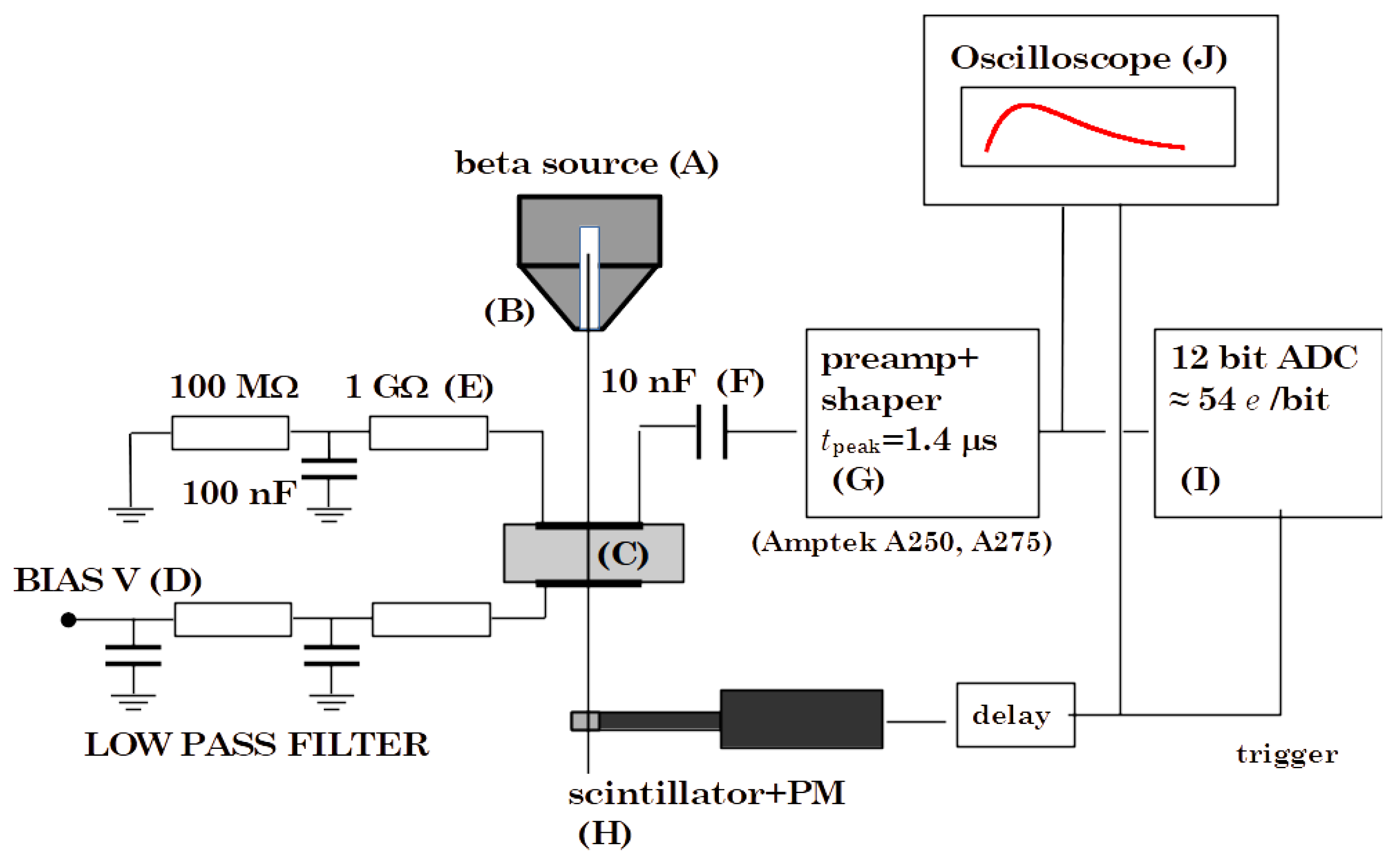
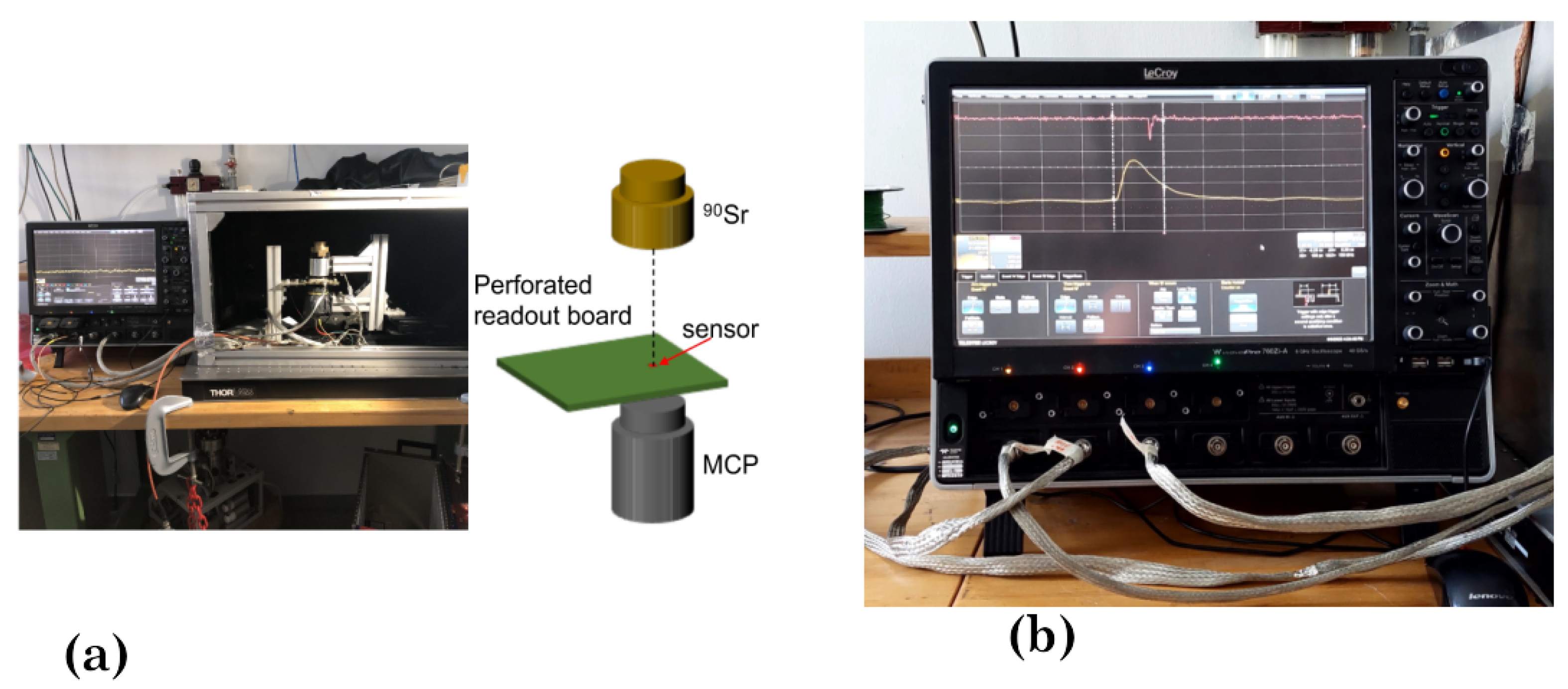
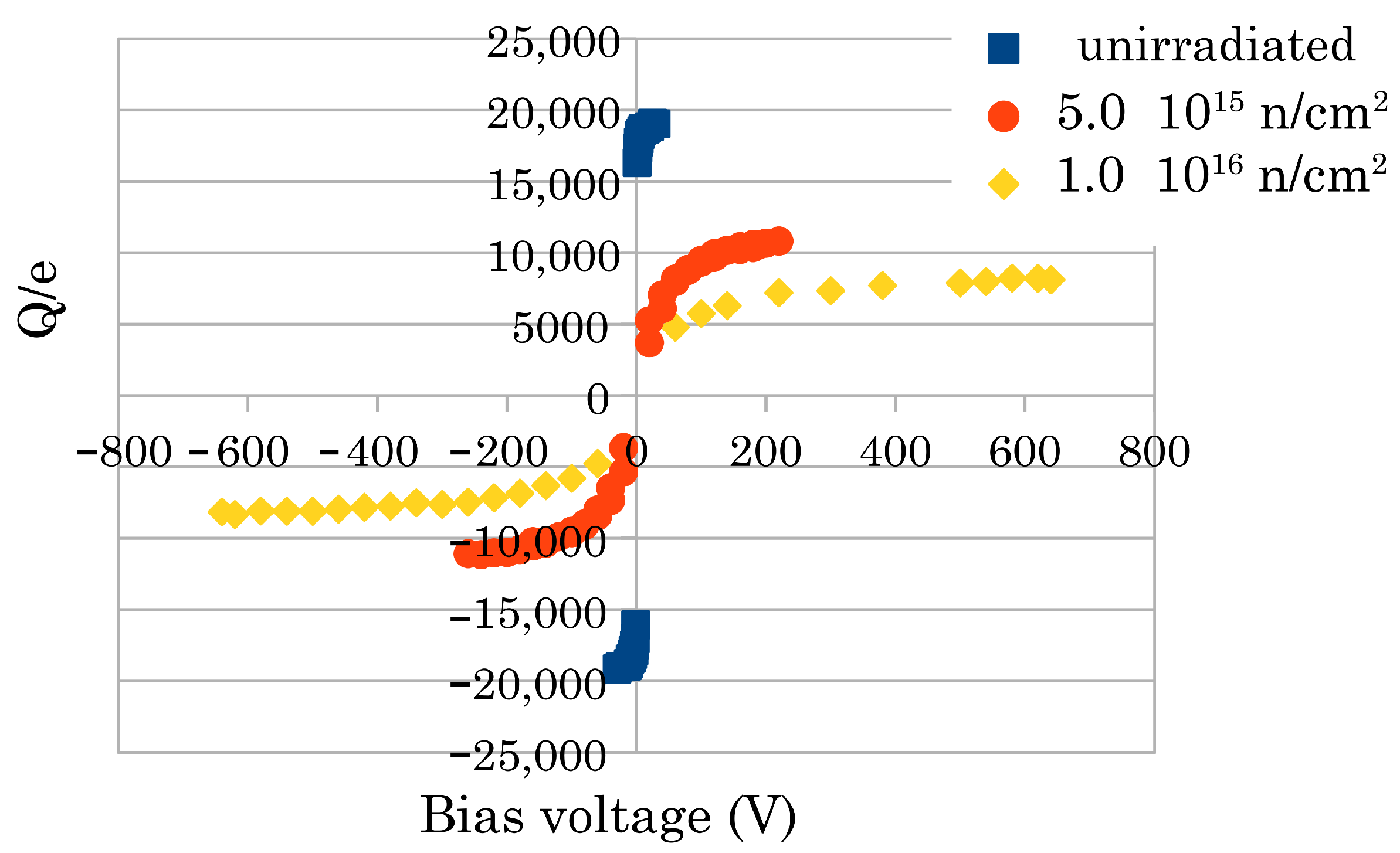
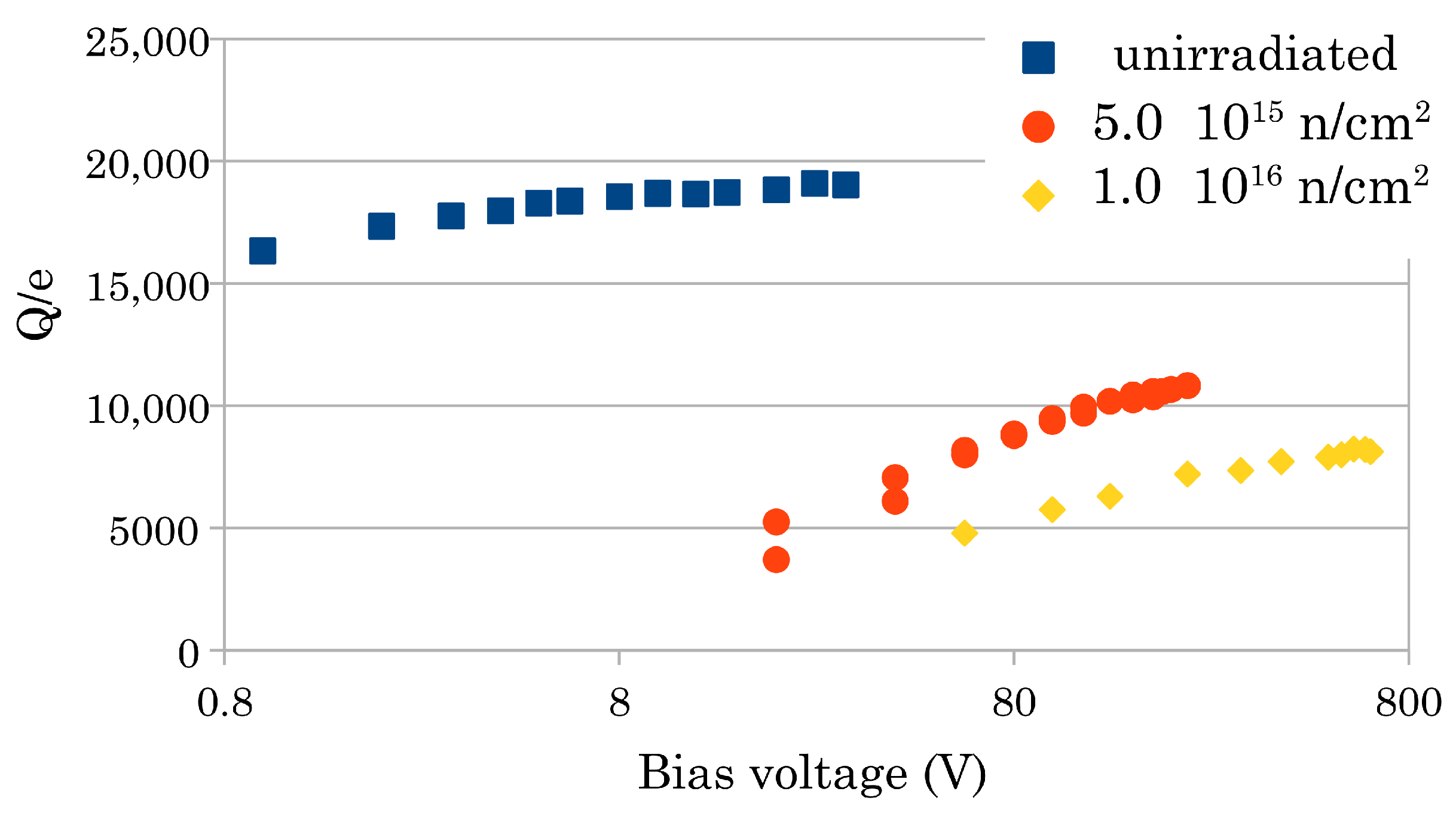

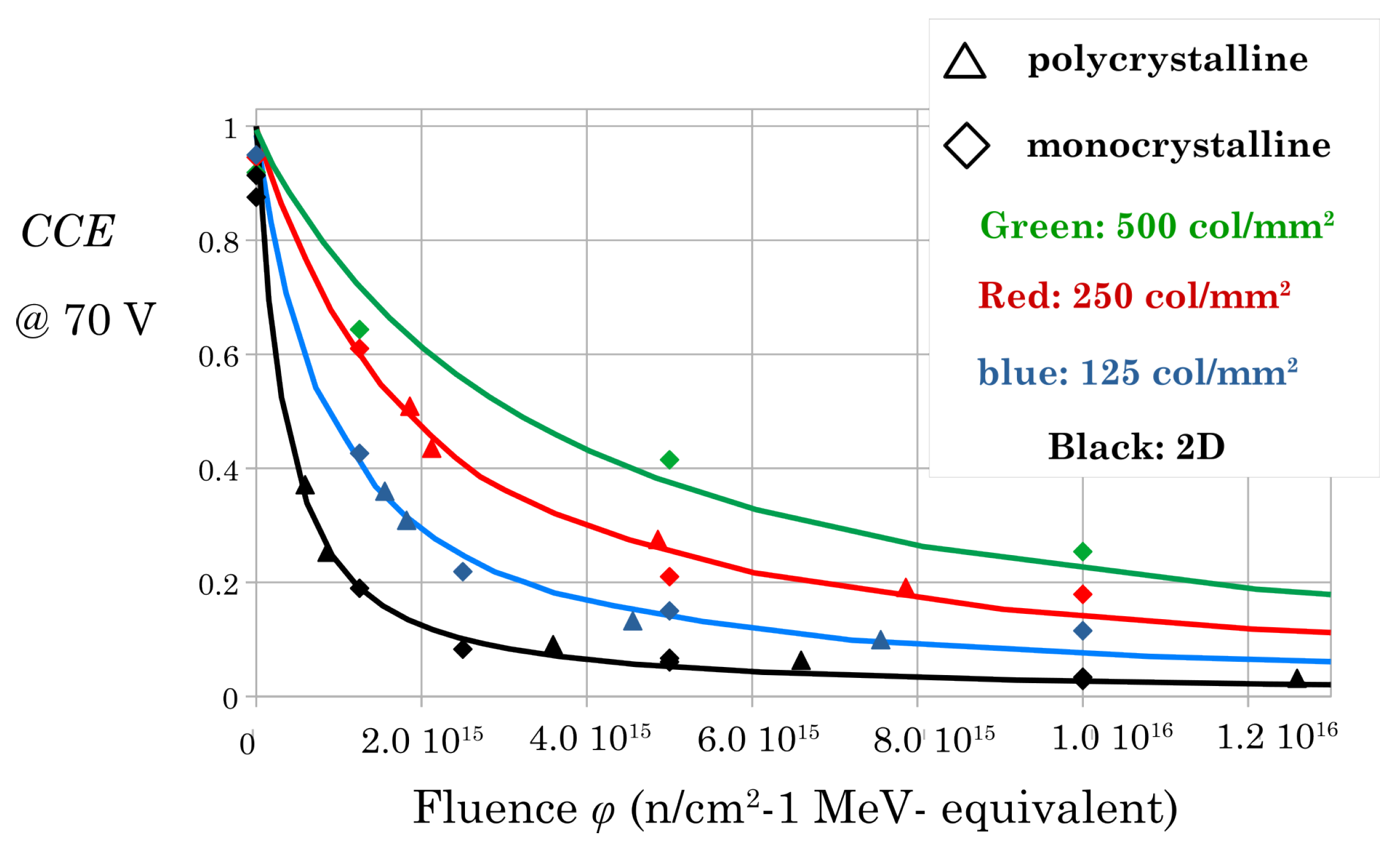

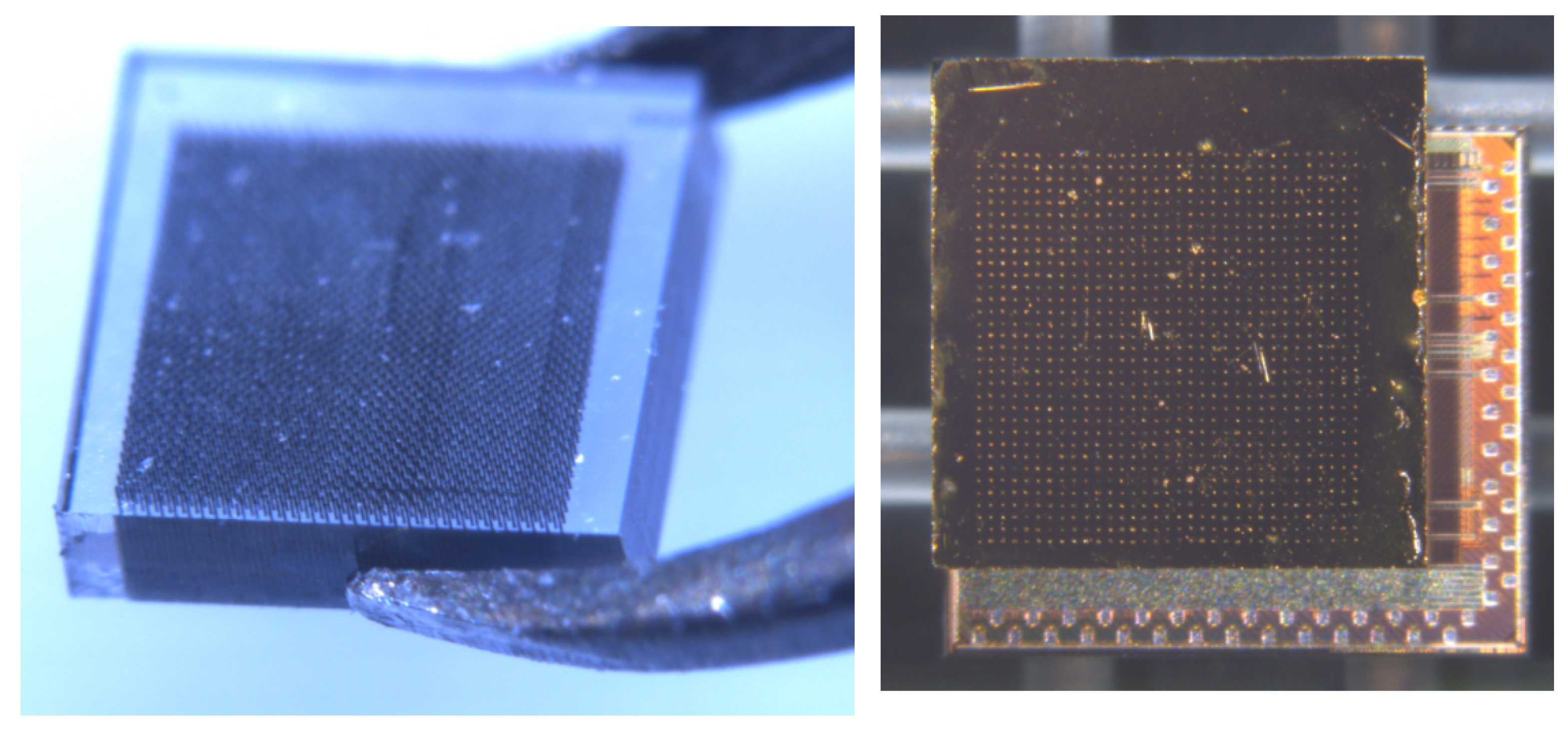



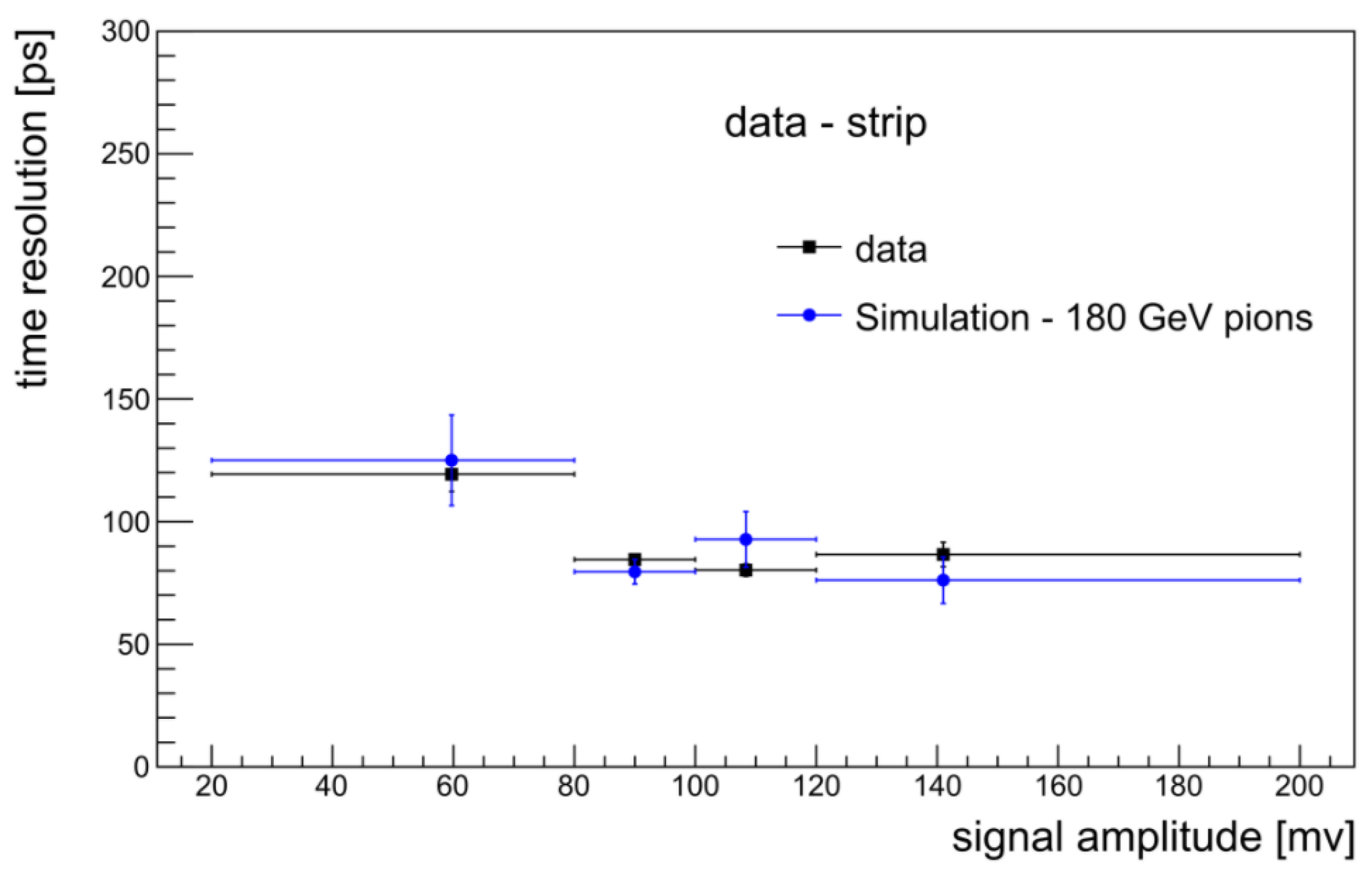
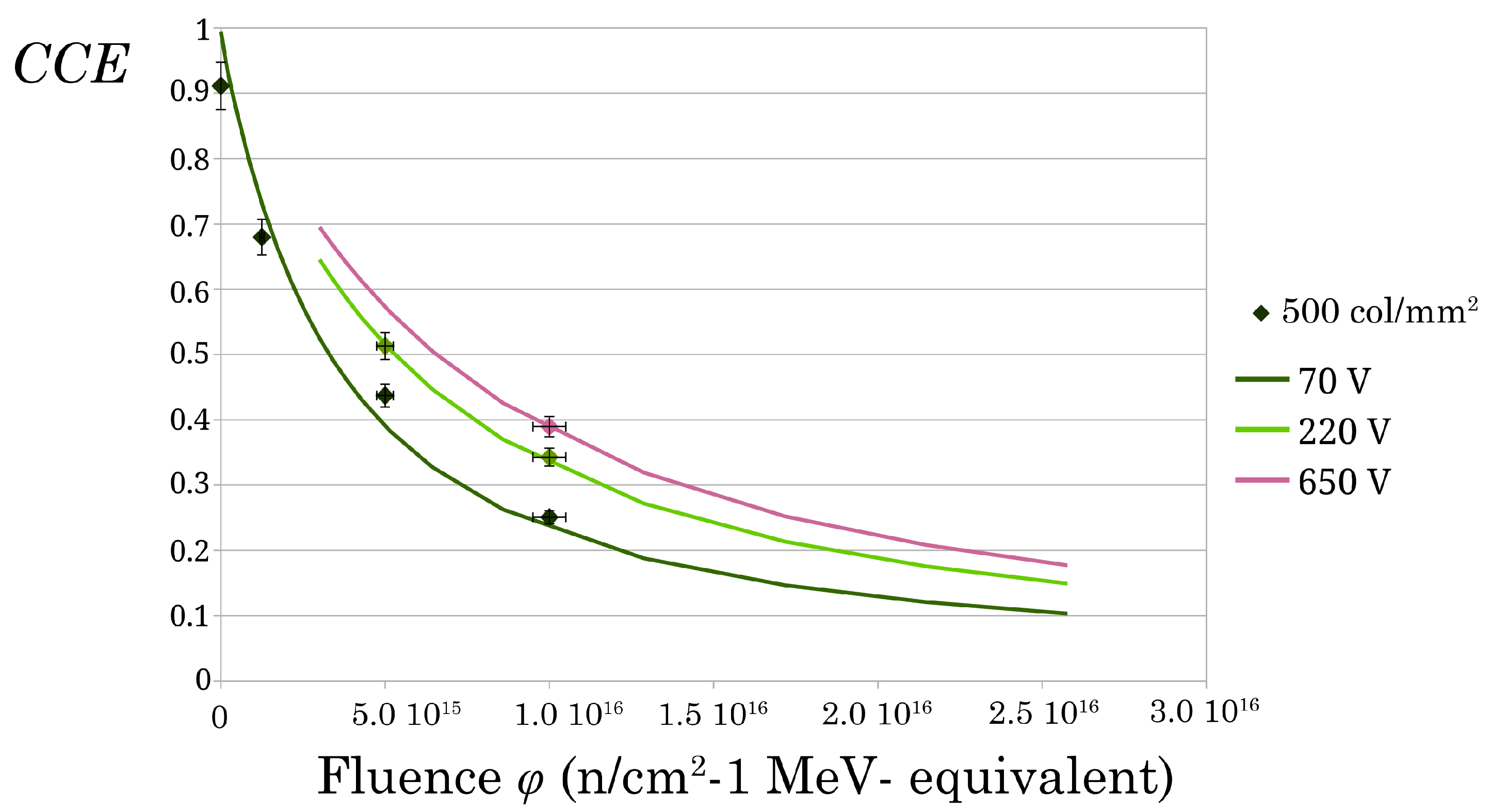

| Fluence (n/cm2), pCVD Samples [22] | Fluence (n/cm2), scCVD Samples |
|---|---|
| 2.6 × 1014 | |
| 1.25 × 1015 | |
| 2.5 × 1015 | |
| 3.0 × 1015 | |
| 5.0 × 1015 | |
| 6.0 × 1015 | |
| 1.0 × 1016 | |
| 1.2 × 1016 |
Publisher’s Note: MDPI stays neutral with regard to jurisdictional claims in published maps and institutional affiliations. |
© 2022 by the authors. Licensee MDPI, Basel, Switzerland. This article is an open access article distributed under the terms and conditions of the Creative Commons Attribution (CC BY) license (https://creativecommons.org/licenses/by/4.0/).
Share and Cite
Anderlini, L.; Bellini, M.; Cindro, V.; Corsi, C.; Kanxheri, K.; Lagomarsino, S.; Lucarelli, C.; Morozzi, A.; Passaleva, G.; Passeri, D.; et al. A Study of the Radiation Tolerance and Timing Properties of 3D Diamond Detectors. Sensors 2022, 22, 8722. https://doi.org/10.3390/s22228722
Anderlini L, Bellini M, Cindro V, Corsi C, Kanxheri K, Lagomarsino S, Lucarelli C, Morozzi A, Passaleva G, Passeri D, et al. A Study of the Radiation Tolerance and Timing Properties of 3D Diamond Detectors. Sensors. 2022; 22(22):8722. https://doi.org/10.3390/s22228722
Chicago/Turabian StyleAnderlini, Lucio, Marco Bellini, Vladimir Cindro, Chiara Corsi, Keida Kanxheri, Stefano Lagomarsino, Chiara Lucarelli, Arianna Morozzi, Giovanni Passaleva, Daniele Passeri, and et al. 2022. "A Study of the Radiation Tolerance and Timing Properties of 3D Diamond Detectors" Sensors 22, no. 22: 8722. https://doi.org/10.3390/s22228722
APA StyleAnderlini, L., Bellini, M., Cindro, V., Corsi, C., Kanxheri, K., Lagomarsino, S., Lucarelli, C., Morozzi, A., Passaleva, G., Passeri, D., Sciortino, S., Servoli, L., & Veltri, M. (2022). A Study of the Radiation Tolerance and Timing Properties of 3D Diamond Detectors. Sensors, 22(22), 8722. https://doi.org/10.3390/s22228722










